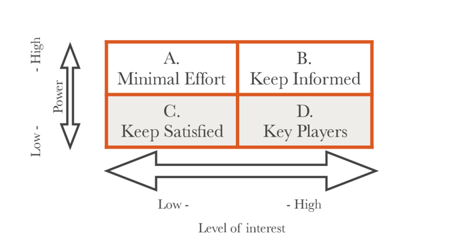Having explored the aspects of risk communication in the last two articles, we now go a little deeper into how to customise risk communication vis-a-vis the stakeholders. The normal definition of a stake is “an interest in an enterprise or a project in which a group or individual has in the outcome of a corporation’s policies, procedures, or actions toward others. Stakes can be based on legal, economic, social, moral, technological, ecological, political, or power interests.” A regulatory perspective defines a stakeholder “as any group or individual who can affect or is affected by the achievement of the firm’s objectives”.
In the classical approach of understanding the stakeholder, particularly from the perspective of communications, is a framework that enables users to map and then manage corporate relationships (present and potential) and communications with groups who affect and are affected by the corporation’s policies and actions. In a normalised approach the two primary variables of a stakeholder are:
- Identity
- Priority
The first variable is critical for the communications team to identify those stakeholders who can affect the outcome of communication at early stages. It might not be possible to identify all stakeholders or provide highly detailed information about the characteristics, but it should be possible to provide initial and sufficient communication data for other communication management tasks, particularly risk management.
Over the course of time a modified tool for stakeholder analysis in risk management and communication has been developed and is popularly called the Power-Interest-Matrix.
This tool or framework assesses the level of power or authority of the stakeholder to influence the outcome of the communication and the level of interest or urgency the stakeholder has in seeing the objectives of communication being met.
This approach is useful as it provides a focus for stakeholder engagement. For those of us focused on communications management and public perception, it is imperative to consider the views and perceptions of stakeholders when establishing the risk management framework. This will allow a reference to transparently communicate with them the details of the risks.
Stakes are not always obvious or explicit and communications can have negative as well as positive stakeholders. For example, some stakeholders may benefit from the successful objective of the project, while others may perceive the failure of the project as a more desirable outcome. Projects or corporations, have a dynamic environment during all phases. This means key stakeholders change in each phase and stakeholder management, including identification, has to be done in all parts of the communication life cycle.
A simplified approach to the communications matrix, specifically to risk communications is –
 This shows how interested each stakeholder group is in achieving the objectives and whether the stakeholder has the power to influence the achieving of the objectives. The power of the stakeholders can be divided into three main categories:
This shows how interested each stakeholder group is in achieving the objectives and whether the stakeholder has the power to influence the achieving of the objectives. The power of the stakeholders can be divided into three main categories:
- Coercive power such as activist groups;
- Utilitarian power such as the sponsors;
- Normative power such as public authorities.
The stakeholders in segment D have the highest salience, so attention would focus on them in terms of engagement activities. Less time and effort will be spent on segment C as they have lower levels of power and interest than the key players. It is sufficient, in large number of cases to understand what is needed to keep segment D satisfied, with careful monitoring of their level of interest in case it increases over time. A similar watching brief is required on segment C for any fluctuations in salience (up or down) and the resultant impact on the required level and type of engagement activity. An engaging communication strategy of keeping informed is appropriate for segment B, as long as their interest remains high and their power low. To conclude, through grouping the stakeholders on the matrix, the communication management function gets a better understanding about how the communication and the relationships between stakeholders can affect the communication objectives.
Understanding the expectations of stakeholders is an important part of the communication strategy. There is a need to know how key stakeholders feel about a project and how they will react to it; both in terms of the outputs and outcomes from the project and the process of the delivery. Furthermore one needs to understand how to engage with them as the project moves through its life cycle.
Inadequate management of stakeholders leads to conflicts and problems, which can result in risk or crises throughout the communication life cycle. The different expectations and interests have to be considered in each phase. Effective communication managers need keen analytical and intuitive skills to identify stakeholders, as well as relationship skills to engage and communicate with them.



Be the first to comment on "Stakeholder analysis and risk management"